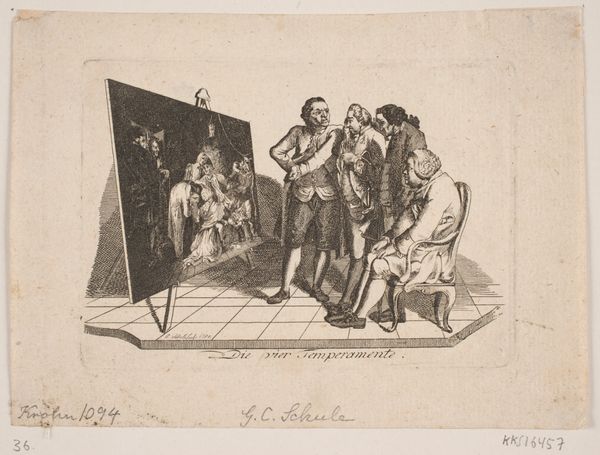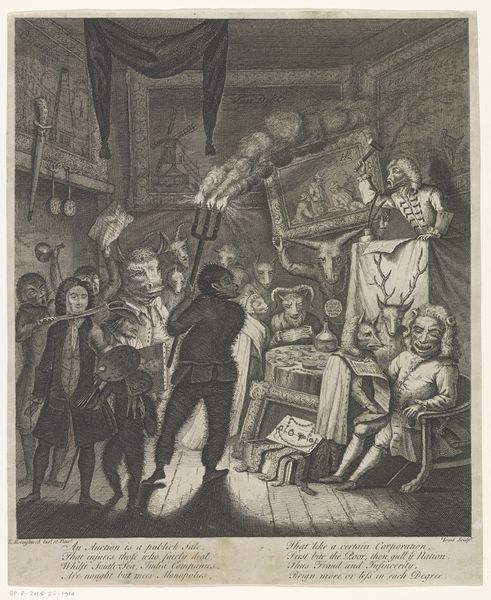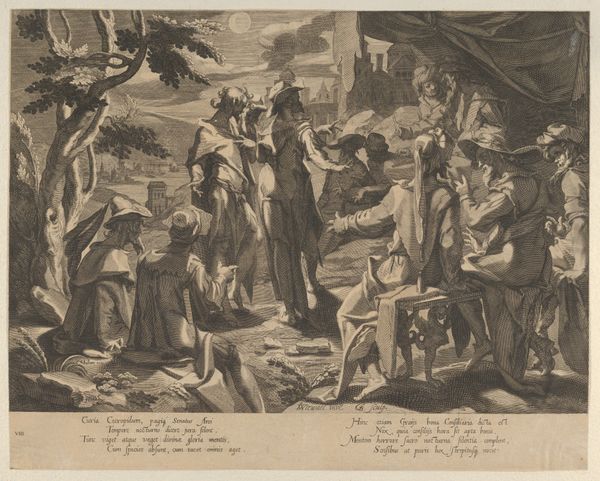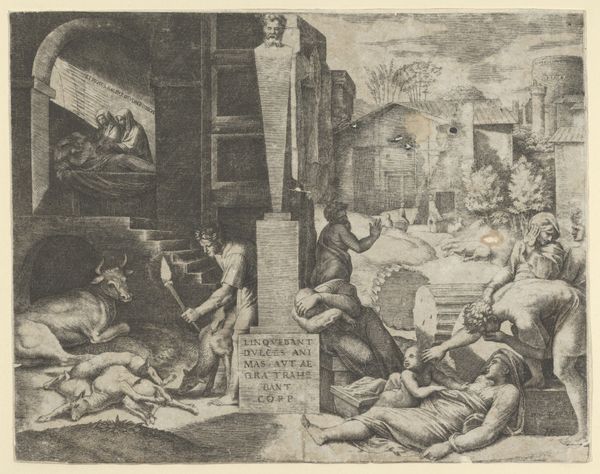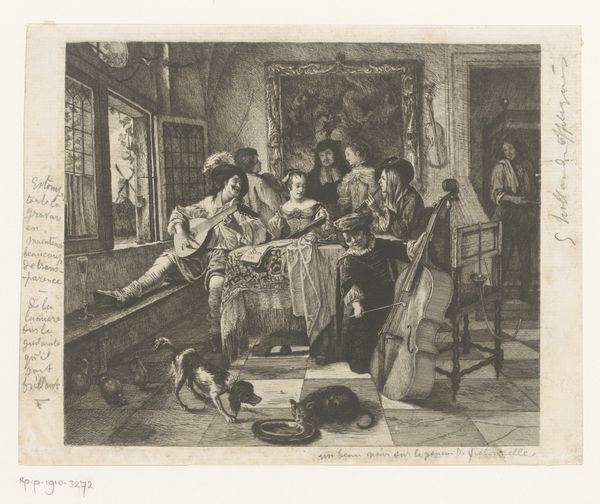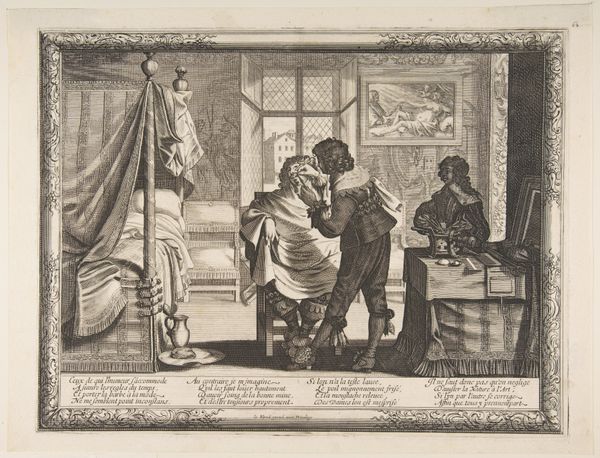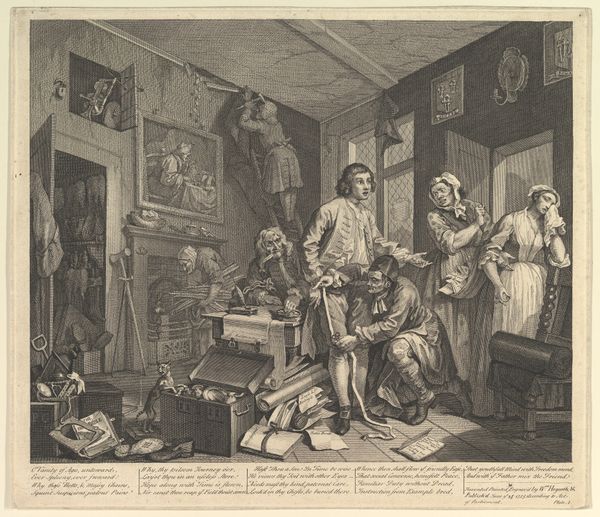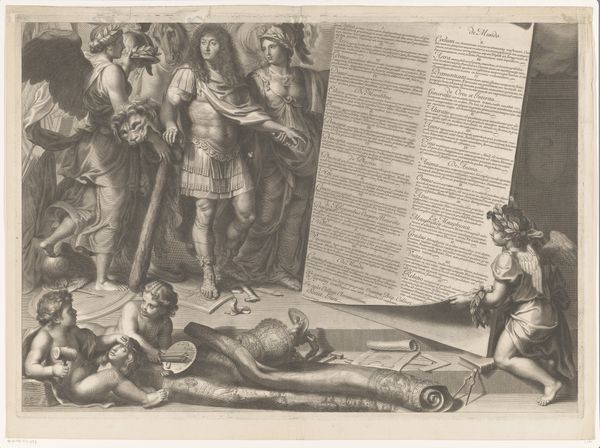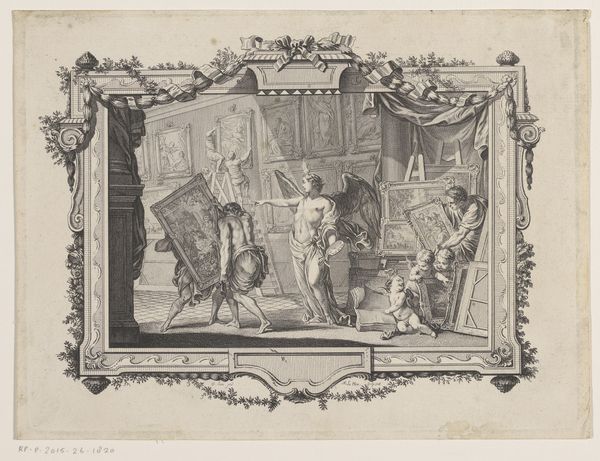
drawing, print
#
portrait
#
drawing
#
baroque
# print
#
men
#
genre-painting
Dimensions: Sheet: 26 3/8 × 19 11/16 in. (67 × 50 cm)
Copyright: Public Domain
Curator: Jan Josef Horemans the Elder created this engraving, "The Painter," sometime between 1725 and 1735. It provides a fascinating glimpse into an artist’s studio during the Baroque period. Editor: It’s overwhelmingly detailed, almost claustrophobic. The varying shades of grey, rendered with impressive precision, create a somber atmosphere that clashes strangely with the somewhat humorous subject matter. Curator: Indeed. Consider how the composition directs our gaze, beginning from the left, drawn in by the standing figures surrounding the artist, then sweeping across the crowded studio space filled with tools, models and fellow artisans. It all converges towards the canvas, presumably the focal point of creative energy, even if we can't see it. Editor: The canvases hanging on the back wall tell a silent story as well, specifically a rather suggestive image of reclining nude women. It appears that the cultural role of women at that time, both on canvas and perhaps within the studio dynamic, can be seen reflected in the various symbolic pieces around the artist. The composition is also interesting, the artist himself is bathed in light. Curator: Precisely, light in baroque works often represents illumination of truth. The painter bathed in light and in control of a scene where he is surrounded by darkness or, at least, in a shaded area. Editor: Beyond that obvious play of shadow and light, what strikes me is the apparent hierarchy. Note the central artist is surrounded by his patrons and in contrast, there are the unseen laborers tucked away and bent over. The artwork invites considerations of status, creativity and the dynamics of the art world itself. Curator: An excellent point. These spatial relationships, articulated through line and tone, create an entire dialogue within the artwork, about both class, social expectations, and professional structure in Baroque ateliers. It invites scrutiny of the relationship of its various figures. Editor: Looking closer, the print as a physical object, crafted through deliberate markings, contains and reproduces the image, thereby continuing a lineage that stretches through both cultural time and image. It's a testament to the enduring power of symbols to encapsulate and convey complex social information. Curator: Exactly, these marks establish, reflect, and invite scrutiny of historical norms of representation and of their socio-economic construction, echoing through historical context and into contemporary meaning. Editor: Yes, a print of history that invites deeper questioning and reevaluation.
Comments
No comments
Be the first to comment and join the conversation on the ultimate creative platform.

